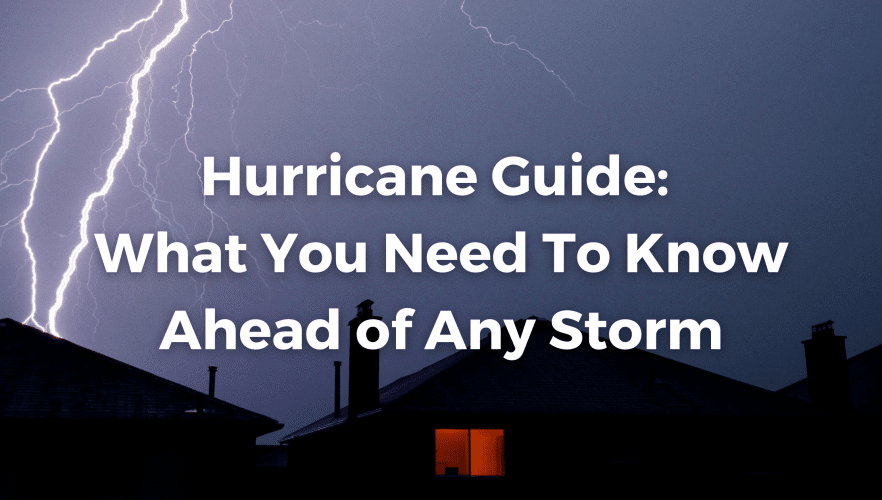
Hurricane Guide: What You Need To Know Ahead of Any Storm
There are few events in modern life that remind us of dependence on technology more than a long power outage. Whether storm-driven or man-made, outages make us feel helpless, aggravated, and even unproductive for hours or days.
Fortunately, advances in energy storage and backup technology can provide your business and family with basic power at all times. Reliable and affordable Standby Power Systems using high-tech Solar Battery systems or Natural Gas generators can help save you from the awful cost and inconvenience of a storm-related outage. Products like the Tesla Powerwall and Generac PWRCell offer outstanding quality and reliability, ensuring that you can keep the lights on even when the grid goes down.
If you have one of these systems, be sure to test it! While business and home backup power systems can be more reliable than the power grid, they must be maintained and tested regularly to be secure after a storm outage.
NOTE: Do not approach any exposed electrical wiring. Accessible electrical devices should have an inner cover that protects users from all wiring. If in doubt, contact Solar Alternatives at (855) 576-5258 for service.
BACKUP GENERATORS
Standby backup generators for business and home should be on an annual maintenance schedule as well as a weekly engine exercise. If your unit has not been maintained or tested recently, or if the weekly exercise is not occurring, it may be in a protective “hold” mode that prevents it from running.
Perform a basic test of your standby generator with the following steps:
-
- Open the generator transfer switch next to the electric utility meter
- Turn off the large circuit breaker just inside the switch
- Wait for the generator to turn on
- Generator should run for 10-30 seconds before the transfer switch activates and begins providing backup power
- Turn on typical home appliances and allow the system to run for 15 minutes under load
- Turn the large circuit breaker in the transfer switch back on and wait 10-15 minutes for the generator to cool down and turn off
- Replace the cover on the transfer switch.
SOLAR BATTERY SYSTEMS
Battery systems provide instant automatic power after power outages, often without any visible flicker or switchover. Although maintenance is less substantial for a battery system than a gas generator, the units should still be tested regularly including an annual battery assessment, which our service team can happily provide.
Test Solar Battery Systems in daytime with the following procedure:
-
- Ensure that the solar battery system is turned on and not in “bypass” mode
- Turn off the main business or home circuit breaker or disconnect
- Turn off the circuit breaker or disconnect labeled “Solar” near the electric utility meter
- Ensure that appliances, lights, and other devices running on the backup system are still operational
- Allow the solar battery system to operate for one hour with a few appliances running, and observe the battery status meter
- Turn on the “Solar” breaker or disconnect
- Turn on the main business or home circuit breaker or disconnect
SPS POWER OUTLETS
These systems provide solar power during the daytime without batteries, and are designed to help charge phones, run TVs and fans, and sometimes run small refrigerators or window A/C units. The system should be tested in mid-day by simulating a building outage as above (turn off main building disconnect), then flipping the switch next to the SPS outlet to activate the system. Wait utwo minutes, then test the outlet with a simple fan or phone charger, pressing the GFCI reset button on the outlet if necessary. Remember to flip the switch back to “on-grid” mode after testing is complete.
POWERPACKS
These small battery-inverter packs are often paired with the SPS Outlet to store a limited amount of energy for lights, radio, fans and charging overnight. Powerpacks must always be left charging to keep batteries viable and ensure they are ready for outages. Charge the PowerPack overnight, then test by plugging in consumer devices and watching the battery level for 30 minutes. If the PowerPack is not functioning properly, batteries may need replacement.
Be Prepared
While nothing can take the aggravation out of an oncoming hurricane, a few simple steps can minimize the inconvenience to family and business customers.
-
- Have a written plan: who are key contacts, where and how will you evacuate, and what will you bring? What other plans must be made to ensure security and safety?
- Know which areas in your path that are likely to flood and avoid them. Check flood maps and evacuation routes when making your plan.
- Whether you’re evacuating or not, prepare a hurricane kit with at least a week of emergency supplies, including food, water, medicine, batteries, and other essentials. Have this ready at the start of hurricane season in June.
- Gas up (or charge up) your cars, and have an emergency fuel supply identified.
- Secure your business or home, especially roof vents, windows, and loose yard items. Flying debris and high winds can cause major damage from even small impacts, and water damage can quickly turn into a moisture and mold problem.
Interested in a Backup Solution?
Commit to providing your business and family with basic power at all times with a reliable and affordable Standby Power System using high-tech Solar Battery systems or reliable Natural Gas generators.
Contact our solar consultants today at (504)-294-3650 to discuss.

